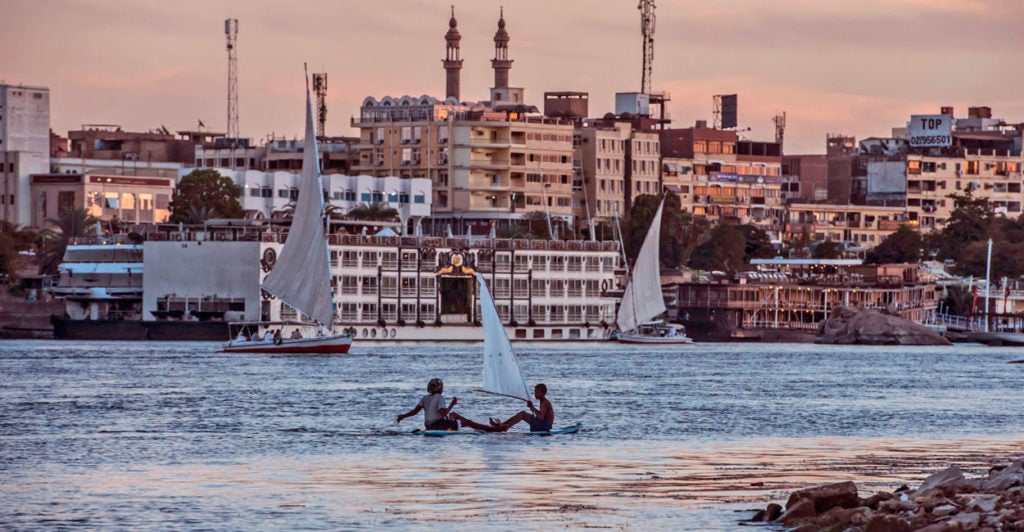After years of stalled talks and escalating tensions, a U.S.-mediated agreement over the Grand Ethiopian Renaissance Dam may be close after President Donald Trump “expressed optimism” in his phone call with Ethiopia’s Prime Minister Abiy Ahmed last Friday.
A signed agreement has not been finalized, but at meetings held in Washington on Jan. 28-31, the water ministers of Ethiopia, Sudan, and Egypt appeared to have agreed on a “stage-based filling plan” and mitigation mechanisms to address long-term operation of the dam during normal hydrological conditions and prolonged periods of drought.
Discussions held two weeks earlier in Washington also appear to have produced a seasonal timeline for the filling of the dam during the wet season and the initial quantity of water that will be retained in the reservoir.
If implemented successfully, the agreement will signal to the region that the United States can promote regional security and play an effective role as third-party mediators. It could open the door for conflict mediation elsewhere in the region.
Announced during the chaos of the Arab Spring, the Grand Ethiopian Renaissance hydroelectric dam was intended to generate electricity for Ethiopia.
The Nile River runs south to north, fed by two main tributaries upstream: the White Nile in Ethiopia, and the Blue Nile in Sudan. Without a transboundary water agreement, Egypt fears that its large share of Nile water will be reduced.
Historically, Egypt has wielded the most influence over the Nile. The 1929 Anglo-Egyptian Agreement and the 1959 Bilateral Agreement guaranteed Egypt 48 billion to 55.5 billion cubic meters of the 84 billion cubic meters of water produced on the Nile River per year as well as final approval on construction projects on the Nile.
Since 1959, population growth rates in Nile-based countries have increased exponentially and the risk of desertification and drought have become real.
The Nile River provides around 85-90% of Egypt’s fresh water, and the dam could drop Egypt’s supply of fresh Nile water by an estimated 25% over the next seven years.
Ethiopia disputes the validity of the colonial-era treaties of 1929 and 1959 since they were excluded from both and were given no official allocation of the water.
In an effort to mitigate tensions between Egypt, Ethiopia, and Sudan, trilateral talks in 2015 between the three countries produced a “Declaration of Principles” signed in Khartoum. It consisted of 10 principles that touched on equitable water use, cooperation between countries, and operational policies.
However, both Ethiopia and Egypt accused each other of violating the 2015 agreement. The two central points of contention are the rate at which the dam reservoir will be filled over an agreed upon period of time and mitigation mechanisms for water distribution among the three countries.
Ethiopia previously has stated its ambition to fill the dam reservoir within three years, which will significantly decrease the water levels of downstream countries, including Egypt.
The priority now is to finalize the transboundary water agreement. Ministers are preparing the final deal now, and it is expected to be signed by the end of February.
Egypt, a vital ally for the United States, provides military, intelligence, and counterterrorism support in the region. Economically, Egypt’s control of the Suez Canal is extremely important for the world economy.
Preventing a regional conflict between Egypt, Ethiopia, and Sudan over the Nile River is therefore critical for both the United States and the world.
Securing this agreement will demonstrate the positive role the United States can play in solving regional disputes through diplomacy.
Since Trump took office, he has been calling for a reassessment of the extent of American involvement in the region, particularly when it comes to American military presence. He also has been vocal about his ability as a “deal-maker,” which indicates the role he envisions the U.S. can play as a mediator in the Middle East.
Negotiating a finalized agreement over the Grand Renaissance Dam would demonstrate to partners in the region and the international community that the United States can be trusted to help solve complex problems in the Middle East.
